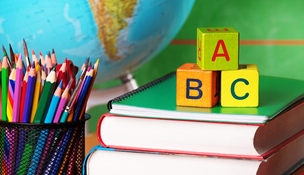
If your child has been placed into an alternative education program by his or her school district, you may be concerned. The stigma attached to such programs can be frightening for both children and parents. Thankfully, alternative education has come a long way in the past few decades. Keep the following tips in mind as you and your child begin the alternative education journey.
Make sure that you understand your rights as a parent.The rights of parents with children in alternative education and special education programs vary from state to state. Be sure to read over information about your rights as a parent. Your school district's main office should make this information available to you. If the school district is unable to provide this information, check with your state's board of education. They will provide you with a document that explains your legal rights as a parent or guardian.
Set up a conference with your child's teacher. Getting to know your child's alternative education teacher can go a long way towards alleviating your worries. When you meet with the teacher, be sure to ask about the curriculum your child will learn. Ask about classroom expectations and rules. Understanding such expectations will help you guide your child.
Ask your child how he or she feels about being in an alternative education program. Some children may be scared or upset when first placed in an alternative education program. However, most children come to enjoy their new classrooms. Be sure to maintain an open dialogue with your child so that you can address issues as they arise.
Remain positive in front of your child. You may be upset that your child has been placed in an alternative education program. However, showing your child that you are upset will only aggravate his or her emotions. Try to remain positive when talking to your child about his or her placement in alternative education.
Think about the benefits of alternative education. Many children are placed in alternative education programs because they do not benefit fully from the teaching tactics used in large classrooms. Keep in mind that being placed in such a program is designed to benefit your child. He or she will be provided with learning challenges in an environment that is conducive to his or her intellectual growth. Embrace the possibilities offered by alternative education so that your child can do the same.
What else can I help you with?
Where can one apply for alternative education?
There are many places that one can apply for alternative education. The most reliable place to apply for alternative education would be to do so through the government website.
Why peace education is a practical alternative?
Peace education is a practical alternative because it equips individuals with the skills to manage conflicts peacefully, understand different perspectives, and promote empathy and intercultural understanding. By fostering a culture of peace and non-violence, peace education can help prevent conflicts and contribute to building more harmonious and inclusive societies.
What has the author B Deka written?
B. Deka has written: 'Alternative education' -- subject(s): Alternative education
What has the author Timothy Wallace Young written?
Timothy Wallace Young has written: 'Public alternative education' -- subject(s): Alternative education, Non-formal education
What is DAEP?
District Alternative Education Program
What is the difference of alternative learning system of the phils from the regular formal education of the Dep ed?
what is the difference between the alternative learning to the formal education system
What is University of Development Alternative's motto?
The motto of University of Development Alternative is 'Education for Human Development'.
What is the goals for alternative education?
The goal of alternative education is to address the socio-emotional issues that prevent students that are "on the fringe" of the edcuational community and provide them with the tools they need to succeed.
Do air cadets stop going to school?
No... Cadets is no alternative to your education.
What does DAEP mean?
DAEP means disciplinary alternative education placement
What does the term alternative belief mean in religious Education?
In religious education, the term "alternative belief" refers to perspectives or systems of thought that differ from mainstream or traditional religious views. It encompasses a variety of spiritual, philosophical, or secular ideologies that individuals or groups may adopt. Understanding alternative beliefs promotes critical thinking and encourages students to appreciate diverse worldviews, fostering tolerance and empathy in a multicultural society. This exploration can help students develop their own beliefs while respecting those of others.
Where is the Visual Understanding In Education in New York New York located?
The address of the Visual Understanding In Education is: , New York, NY 10011-2427
